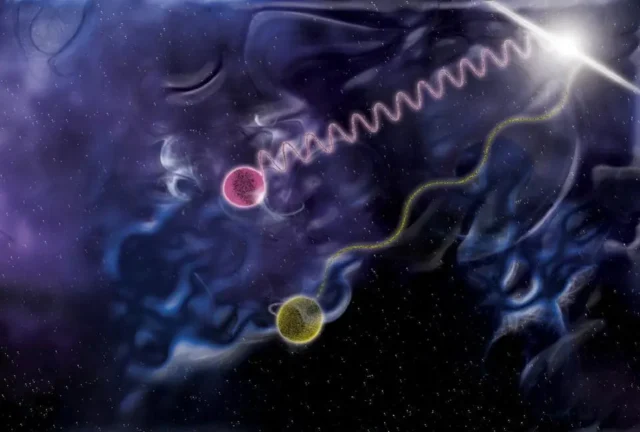
In the quest to solve one of the universe’s most enigmatic puzzles—dark matter—scientists are turning their attention to an intriguing candidate: dark photons. Recent studies led by physicist Nicholas Hunt-Smith of the ARC Centre of Excellence for Dark Matter Particle Physics and the University of Adelaide in Australia have brought this mysterious particle into the limelight.
What Are Dark Photons?
Dark photons are hypothetical particles that are akin to the photons we are familiar with, but they interact weakly with ordinary matter. Unlike regular photons, which are the particles of light, dark photons are elusive and have been proposed as a means to explain the existence of dark matter.
Why Are They Important?
- Dark Matter Conundrum: About 84% of the universe’s matter content is dark matter, yet its nature remains unknown.
- High Confidence Level: The team led by Nicholas Hunt-Smith calculated a confidence level of 6.5 sigma, suggesting the odds that dark photons don’t explain the observations are one in a billion.
- Potential for Discovery: Dark photons offer a new avenue for understanding dark matter, which has eluded scientists for decades.
The Latest Research
A global team of scientists has delved deeper into understanding the complex nature of dark matter through the lens of dark photons. Their work suggests that these shadowy particles could be the key to unraveling the dark matter mystery. The research has been met with considerable in the scientific community, as it opens up new possibilities for future experiments and observations.
Implications
The existence of dark photons could revolutionize our understanding of the universe. Not only could they provide answers to the dark matter enigma, but they could also lead to advancements in particle physics, cosmology, and even quantum physics.
Key Takeaways
- Dark photons are gaining serious consideration as a means of discovering the identity of dark matter.
- A high confidence level of 6.5 sigma suggests that the odds of dark photons not being the explanation are extremely low.
- The research opens up new avenues for scientific exploration and could revolutionize multiple fields of study.
Conclusion
The study of dark photons is still in its infancy, but the early signs are promising. As scientists continue to probe the universe’s darkest secrets, dark photons stand as a beacon of hope in solving one of the greatest mysteries of all time.
Important Points:
- Dark photons could explain about 84% of the universe’s matter content.
- The research led by Nicholas Hunt-Smith has a high confidence level, making the existence of dark photons highly probable.
- The discovery of dark photons could have far-reaching implications in various scientific fields.
For those intrigued by the mysteries of the universe, the study of dark photons offers a tantalizing glimpse into what might be the missing piece of the cosmic puzzle.










